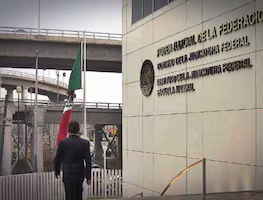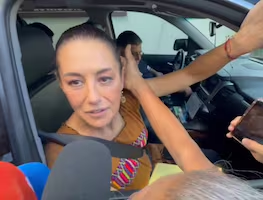Más Información

CEPL, en espera de orden del Tribunal Electoral; busca asumir proceso interrumpido del Comité del Poder Judicial

Tras sanciones de Trump a Colombia, Sheinbaum dice que hay que respetar a todos los países; “me tengo que informar bien para poder opinar”

Titular de Jufed participa en inauguración del Año Judicial Interamericano 2025; tratará la situación que atraviesa el Poder Judicial en México
Between July and December 1968 , 78 deaths, 186 injured, and 1,491 detainees were reported, according to an investigation carried out by Susana Zavala , based on the different reports she has documented.
The information, provided to EL UNIVERSAL by the UNAM , details that among the victims, there were 31 missing persons, but the information hasn't been confirmed.
The investigation's findings will be part of the Historical and Digital Public Archive called M68: Citizens in Movement (M68: Ciudadanías en Movimiento ), inside the Tlatelolco University Cultural Center (CCUT) , UNAM .
50 years after the events that took place at the Plaza de las Tres Culturas in Tlatelolco , the researcher Susana Zavala emphasizes that she has documented that from July to December 1968 , there are reports of 1,786 affected parties , but she explains that it must be taken into account that more names are being added to the investigation as it takes place.
On February 12, 2002, EL UNIVERSAL published that according to classified documents from Washington , the U.S. embassy in Mexico estimated that between 150 and 200 people died during the October 2, 1968 events, which is comparable to the Tiananmen massacre.
An intelligence report from the U.S. government considered that many of the demands made by the students were legitimate .
In some secret documents, the CIA , the U.S. embassy in Mexico , and the FBI denied the intervention o f foreign intelligence organisms in the students' movement , and that in their opinion, it was the result of internal political issues , rather than o f foreign intervention , as the Mexican government alleged.
The secret documents were published on February 2002 , and they reveal that the generals Mario Luis Ballesteros Prieto and Luis Gutiérrez Oropeza “intentionally changed” the orders they were given by the then National Defense Minister, Marcelino García Barragán .
Intelligence analysts
and U.S. politicians considered that the 1968 students' movement was a “warning” that the “stability” had been surpassed. The documents show a different version from the one used by the Mexican government.
“The effect of the students' movement, as a minimum, has intensified the self-examination, already in process, of the political leaders of the nation,” says a special report, added to the CIA 's weekly summary from January 17, 1969.
by Kate Doyle.
gm








